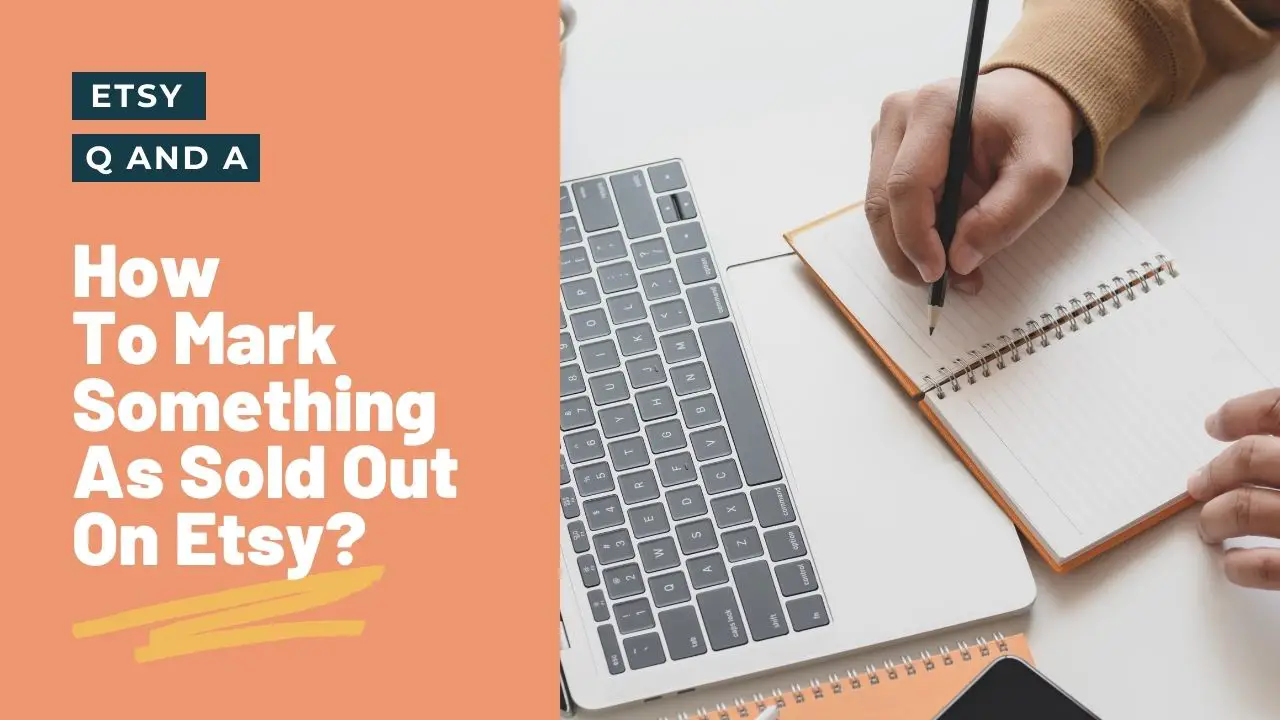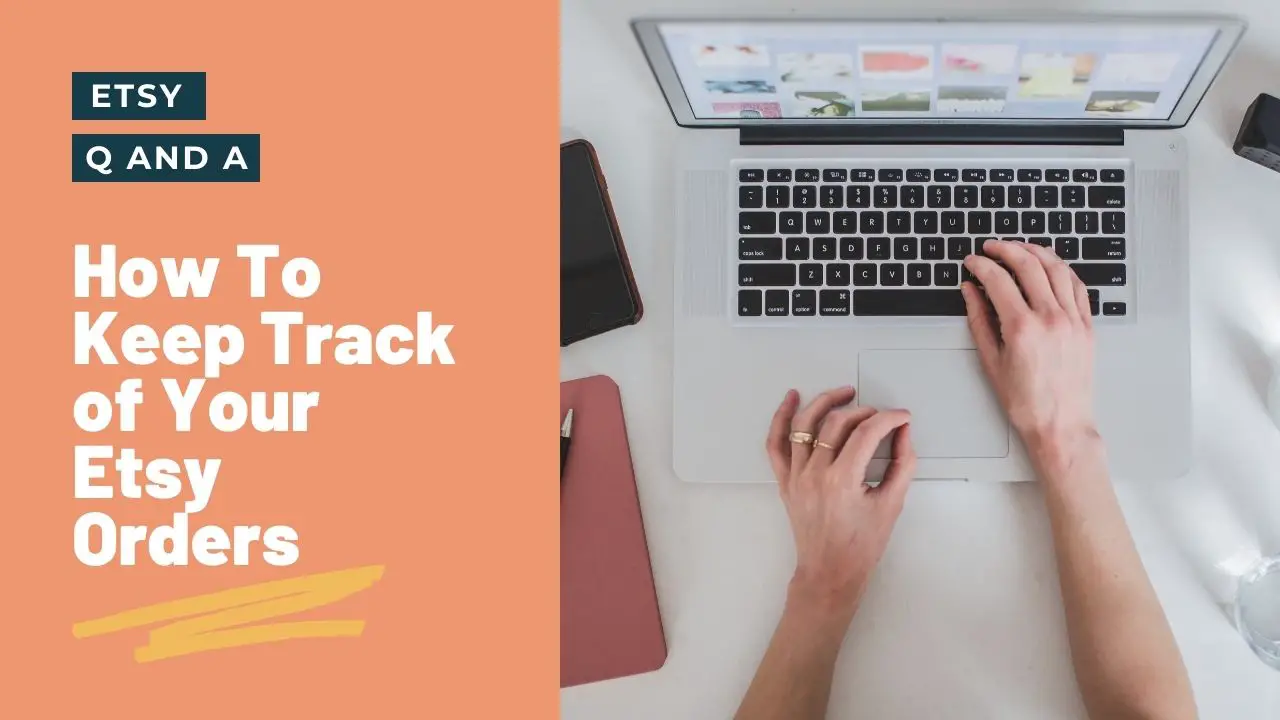Consistent sources of traffic are the key to any successful business. It acts as the top of your sales funnel, and the more you get, the more opportunities you have to convert to a sale.
There are a wealth of opportunities to improve your Etsy traffic whether you are just starting out, or if you’re a seasoned Etsy Seller.

In this guide, I’ll take you through the different traffic sources, and give tips and tricks on how to improve each.
Different traffic sources
First, let’s look at traffic sources as described by Etsy. This will help visualise as we go forward.You can see a breakdown of your current traffic levels on your Etsy Store’s Stats page.
Etsy app & other pages
As the name suggests, this is all traffic from the Etsy mobile app, and from any page on the desktop site (excluding search).
Visits from the mobile app include listing clicks from search, any click through from related listings, any click from favourites, or from an ad displayed in the app.
The visits tracked here include any click from non-search pages on the desktop site. This includes listing clicks on category pages, the home page, Etsy’s blog, favourites, and forums.
Etsy Search
This section covers any visit to a listing from the Etsy search bar on Etsy.com. Simple. This doesn’t include visits from the search on the mobile app (this is tracked under “Etsy app & other pages”), or from ad clicks (this is covered in “Etsy ads”)
Visits from people searching on Etsy. This doesn’t include Etsy Ads promoted in Etsy search or search traffic in the Etsy app. You can also see what search terms people are using to find your listings.
Etsy Marketing
Etsy will advertise your listing on other popular platforms. This includes things like Google Shopping. This section tracks clicks from these ads.
Visits from traffic through Off Site Ads on Google and Bing or search engine optimization to drive more traffic to your shop from external channels.
Social media
Social media is becoming a huge driver of traffic for Etsy. This section not only tracks how much traffic you get from them but also breaks down how much came from each.
Currently, Etsy breaks this down as traffic from:
- Tumblr
Visits from Instagram, Facebook, Pinterest and other social media websites through your personal accounts, organic sharing on social media, and Offsite Ads on Instagram, Facebook, and Pinterest.
The order of these platforms is no coincidence. The biggest drivers of social media traffic coming from visual platforms such as Instagram and Pinterest!
Etsy Ads
The last of the Etsy based sources is Etsy ads. This is all traffic coming from Etsy ads campaigns on Etsy.com.
This number should tally up with the numbers you have in your seller dashboard (see under Marketing > Etsy Ads).
Visits from ads in Etsy search and on Google. This doesn’t include visits from ads on the Etsy app. All app activity is included in the “Etsy app and other Etsy pages” traffic source.
Direct
This is a “catch-all” for any source of traffic not already listed. Direct traffic can be any traffic where the user has purposely entered your listing URL. This includes:
- Entering the URL into their browser
- Clicking on a bookmarked URL to one of your listings
- Clicking a link to your product in an email or other website
Is more traffic better?
No, more traffic is not always better. What you want to attract are customers who like your style, and are ready to buy!
Before we can target these customers, we need to define the different types of web traffic…
Different Types Of Traffic
Qualified vs Unqualified
Qualified and Unqualified traffic refers to how motivated the customer is to buy.
Qualified traffic is traffic where the customer already likes your style – or possibly even seen your listing before. This
Qualified traffic refers to users who reach your website that has already shown interest in your products and, therefore, can be considered potential clients. Qualified traffic has a greater chance of converting.
Unqualified traffic includes users who are just browsing and other timewasters. This traffic makes your stats look good, but does very little in improving your sales figures!
External vs Internal
Finally, we need to split between External and Internal traffic sources. This refers to where the traffic comes from.
Internal
Internal traffic covers any visitors coming from another page within Etsy. This includes Etsy ads, the Etsy app, and (most importantly) Etsy search
Pros
Users who visit your listing from within Etsy will already be familiar with the marketplace. They know what to look for, and where to find it.
They will also have an idea of the price points found on Etsy – this is important as Etsy prices are usually higher than on other sites.
There will be fewer trust issues, both in your store and the platform as a whole. This traffic is often higher converting – or more qualified.
Cons
There is a limit to the amount of traffic you can get on Etsy. Etsy is increasing in popularity, so the pot of traffic will continue to grow, but can’t compete with the amount of potential traffic from External sources.
You can also get unqualified traffic on Etsy too. These are customers who are window shopping, however regular Etsy users will “favourite” items, and can be tempted back with targeted offers. Once they revisit, they will become qualified.
External
External traffic is any source from outside Etsy. This will include social media, Google search, or even features on other websites.
Pros
There is a vast amount of traffic available! The more opportunities you create outside of Etsy, the better chance you have of grabbing some of that traffic for yourself.
Being visible outside of Etsy has other advantages. You are more likely to be featured on other websites – including big-name magazines. This kind of exposure is RARE, but the revenue from it can be massive.
Cons
Building a presence outside of Etsy requires a ton of effort, and often a fair bit of cash too.
Standing out can be very tricky, and traffic is likely to be unqualified – especially if you’re targeting broad audiences.
Large chunks of this audience will be unfamiliar with Etsy. These users will need education in the marketplace in order for them to trust Etsy and your store. They may also be put off by the prices – as mentioned above, many users will need to adjust their expectations on what they should be paying.
What types of traffic you should aim for
All of your efforts should be geared towards gaining qualified traffic. Things like Etsy search are the best, as these are customers actively looking for something.
By getting your listings in front of these customers you will be increasing your chances of converting traffic into sales.
Obviously, this may not always be possible, especially with external traffic. For these sources, it’s best to track how much traffic is coming in compared to sales.
How to get more internal traffic
Etsy offers plenty of tools to help improve your internal traffic. By using the stats and insights given by Etsy you can easily boost internal traffic.
For a deep dive in improving your Etsy SEO see my guide here. I’ll be going over the basic principles here, but check that guide out for more information and examples.
SEO
SEO is the foundation of a successful Etsy listing. At its basic level SEO is creating your listings so that they appear as high as possible, in as many different relevant searches as possible.
Find target keywords
Before you can update your listings, you need to know what searches you want your product to appear in.
These search terms are also known as “keywords”. If you haven’t done this process before I’d suggest you start by describing your own product. What would you search for? How would you find it?
Be sure to think about “adjective noun” pairs. For example “blue mug”, “art-deco cup” etc.
These pairings are great for helping your listing appear in as many different searches as possible.
Another approach is to find other products similar to yours. See what they are using. If you find successful listings, there’s a good chance they are targeting some great keywords.
Keep a note of ALL the ideas you noted. Now look through and think in terms of a potential audience. Which ones do you think are searched the most? Pick 2 or 3 of the best ones – these will be your “target keywords”.
Updating titles and tags
Now you have your keywords, it’s time to update your listing. Follow these steps:
- Take your target keywords and add them to your title, the beginning of your description and your tags.
- If the keyword is too long for a single tag, split it in to two tags
- Add as many of your “adjective noun” combinations into your tags
- Go through and see if any of your adjectives or nouns match the Etsy listing attributes. These should match “primary colour”, “room”, and “style”
Etsy uses all of these fields to decide what listings match a search.
Do this process again every 3-6 months to test new tag ideas.
Improve reviews
After titles and tags, reviews are probably the biggest driver in improving rank. Etsy sees this as a signal that your store is popular and delivering great customer service. They also help convert traffic into sales. 5-star reviews are a great trust signal – one of the key drivers in marketing
As you can only get reviews from actual orders, you won’t be able to make quick changes on this.
If you have a store and are making sales already, check out my guide on how to ask for a review on Etsy. This will help boost the rate you get reviews and will improve your search ranks.
If you are new or struggling to get off the ground, check out my guide on starting a store, this has some ideas on how to get those awkward first reviews.
Etsy ads
Etsy ads are a fantastic way to boost our traffic. They offer guaranteed placement in prime locations on search results of your target customers.
The problem is ads can be a money sink if you get them wrong. Here are some tips to make the most from your ad spend.
Calculating your ROI
Before starting advertising, it’s important to know if they are working. Before you can know this you need to know at what point your ads no longer become profitable.
Here’s an example – I sell a product for $20 with a $5 profit margin. If I spend $50 and sell 5 products am I making any money? No. I’m spending on average $10 on ads per item ($50 / 5). This wipes out my $5 profit and leaves me $5 worse off than when I started!
Having these numbers in mind will help guide how you use them.
Deciding on how much to spend
Always start small, especially if you’re new and don’t have much money coming in. I recommend spending around $2-$5 a day, and only advertising your most successful listings.
This comes down to doubling down on your strengths. If a poorly performing listing is not working for you without ads, why would throwing money at the problem help?
Stick to advertising no more than 3 listings. Keep it simple.
How long to run ads for before stopping?
Let the ads run for at least 30 days as Etsy recommends. Etsy will track the performance of your listings and will tailor the results it displays to ensure the best chance of a click and a sale. Again, with fewer listings, Etsy can use your money wisely. It will be able to test more search results, as your budget isn’t spread out over 50 listings.
How to get more external traffic
Ads outside of Etsy requires knowledge of marketing and sales funnels. I don’t recommend it to anyone until they have exhausted all other options.
I haven’t been able to find much success with offsite advertising – not that this means it’s impossible – but I’m the wrong person to ask!
Getting featured on other sites
Getting your listing featured in a “Gift Guide”, or some other feature is fantastic exposure. This has happened to me once, and I saw sales increase 300%! Getting the endorsement of a top media outlet gives you credibility.
I recommend a service called HARO. This is an email service – 4 times a day you will get an email with requests from reporters looking for experts for their articles. These often include requests for products, either as product recommendations, or suggestions for gift guides.
Reply to these offers with links to your most relevant products. Ensure you have FANTASTIC photography before doing this.
Your products will need to stand out if they are to be selected.
Social media
The next logical step for many Etsy sellers is social media. Why not? Seems every other store has at least 3 social accounts, how else can you keep up?
Not all social media platforms are equal. Only a few will benefit your store in the long run – unless you are willing to put in the extra effort. Personally, I’d recommend other activities instead of planning out a month’s worth of tweets…
Best social media platform for Etsy
For me the best social media platform for Etsy is Pinterest. Pinterest is by far the best platform for casual Etsy sellers (and the not so casual ones too!)Others are great for exposure but can be social media treadmills. Once you stop posting and engaging in “the community”, the traffic stops. This is not what you should be after.
Pinterest is a search engine in itself. Items don’t drop off over time, so a well thought out Pinterest strategy can be “set and forget”.
My recommended actions
There has been a lot of options covered here, so here are my top 5 activities you should be doing to improve your traffic:
- Keyword Research – Always be on the lookout for new trends and opportunities. Keep the test and tracking of experimental listings based on your research.
- Titles and Tags – Every 3-6 months review your listings. See what has been working and what hasn’t. See my guide to SEO to see how to do this kind of audit
- Get more reviews – I find that once the reviews start coming in your sales will ramp up. Put processes in place today to drive more reviews. See my guide on how to ask for a review on Etsy for more information
- Switch on Etsy ads – but only for your top 2-3 listings. Calculate your ROI value, and review in 30 days time
- Investigate Pinterest – There are some great Pinterest courses on Udemy.com. This would be a great place to start






